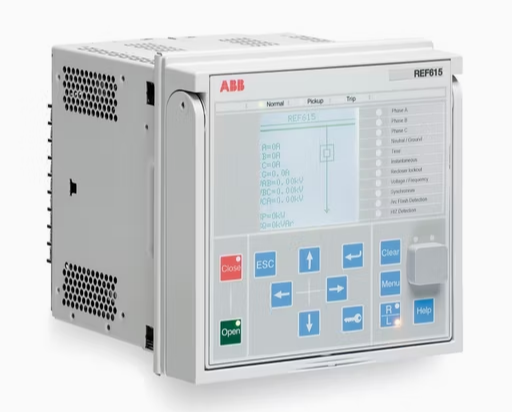
The Role of Time-Delayed Overcurrent and Inverse Time Overcurrent in Comprehensive Protection Relays
Comprehensive Protection Relays (CPR) are crucial devices in power systems, designed to protect electrical equipment from faults and overloads. These relays integrate multiple protection functions, allowing the timely disconnection of power when faults occur, thereby preventing equipment damage and system failure. Time-delayed overcurrent and inverse time overcurrent are two common overcurrent protection functions in CPRs. This article will elaborate on the roles of these two protection features and their significance within CPRs.

1. Time-Delayed Overcurrent
Time-delayed overcurrent refers to a protection function in which the CPR delays its action for a specified time after the current exceeds the preset protection threshold. The relay will only issue a fault signal and initiate disconnection if the current remains above the threshold for a specific duration.
Role of Time-Delayed Overcurrent:
-
Prevent Short-Term Overload Damage: In power systems, equipment may occasionally experience brief periods of overcurrent, such as when motors start and the current temporarily increases. If the CPR reacts immediately, it may mistakenly disconnect normally running equipment. Time-delayed overcurrent allows for a buffer period, ensuring that the equipment can withstand short-term overload without being disconnected prematurely, thus avoiding unnecessary downtime.
-
Adapt to Equipment’s Tolerance: Certain equipment, such as motors and transformers, can tolerate higher currents for short periods without sustaining damage. Time-delayed overcurrent protection in the CPR provides an appropriate delay, allowing the equipment to handle brief current surges above the rated value without triggering a false protection action.
-
Improve System Reliability: In practice, electrical devices may briefly exceed their current thresholds due to load fluctuations or momentary startup overcurrents. Time-delayed overcurrent protection in the CPR prevents unnecessary protective actions, ensuring continuous operation and enhancing the reliability and stability of the power system.
-

Comprehensive Protection Relays
2. Inverse Time Overcurrent
Inverse time overcurrent refers to a protection function in which the CPR’s response time decreases as the current increases. The higher the current, the quicker the relay responds, thus ensuring faster protection for more severe faults.
Role of Inverse Time Overcurrent:
-
Rapid Response to Short Circuit Faults: The main characteristic of inverse time overcurrent protection is that its response speed increases with the severity of the fault current. In a power system, during short circuits or major fault currents, the current rapidly increases. The CPR will shorten its response time according to the current magnitude, quickly disconnecting the faulty current to prevent damage to the equipment. Especially during severe short circuits, the CPR can quickly disconnect the power to prevent the fault from spreading.
-
Prevent Severe Damage to Equipment Due to High Fault Currents: High fault currents often cause equipment to overheat or even burn out. Inverse time overcurrent protection in the CPR quickly initiates disconnection as the current rises, thus minimizing the risk of damage and protecting the power system from severe faults.
-
Optimize System Operation: Inverse time overcurrent protection adjusts its response time based on the current magnitude, allowing the CPR to take the most appropriate protective action under different conditions. For example, when minor faults occur, the relay will delay its action to avoid unnecessary system shutdowns, while in more serious faults, the relay will act immediately to disconnect the fault current and maintain system safety.
3. Combined Application of Time-Delayed Overcurrent and Inverse Time Overcurrent
In Comprehensive Protection Relays, time-delayed overcurrent and inverse time overcurrent are often used together, complementing each other to ensure comprehensive protection of equipment:
-
Adaptability to Different Fault Types:
- Time-delayed overcurrent protection is suitable for load fluctuations, mild overloads, and similar conditions, helping to avoid unnecessary shutdowns.
- Inverse time overcurrent protection is designed to address short circuits, heavy overloads, and severe faults, quickly disconnecting the faulty current to protect system equipment from damage.
This combination allows CPRs to respond flexibly to different fault conditions, providing comprehensive protection during system operation.
-
Enhance the Overall Protection Capability of the Power System: By integrating both time-delayed and inverse time overcurrent protection, CPRs can ensure that power equipment is effectively protected in various situations. For instance, time-delayed overcurrent protection ensures normal operation during brief load surges, while inverse time overcurrent quickly disconnects fault currents to prevent system damage.
-
Avoid Misoperation and Unnecessary Disconnections: Power equipment may temporarily exceed its rated current due to various factors. Time-delayed overcurrent can prevent false trips caused by short-term overloads, while inverse time overcurrent ensures immediate response during major faults, protecting the equipment from damage. Combining these two protection methods avoids unnecessary downtime and reduces maintenance costs.
4. Conclusion: The Role of Time-Delayed and Inverse Time Overcurrent in Comprehensive Protection Relays
Comprehensive Protection Relays are the core of electrical protection and automation control in power systems, with time-delayed overcurrent and inverse time overcurrent being essential protection features. Time-delayed overcurrent provides tolerance for equipment overloads, allowing short-term overcurrent without triggering false trips. On the other hand, inverse time overcurrent ensures a rapid response to short circuits and major faults, quickly disconnecting faulty currents to protect equipment. Proper application of both features forms an efficient and comprehensive protection mechanism in the power system, ensuring equipment is adequately protected in all operational states, thus improving the system’s stability and safety.
By combining time-delayed overcurrent with inverse time overcurrent, CPRs can provide flexible, precise protection measures based on fault types and current conditions, reducing misoperation and ensuring efficient system operation and long-term equipment safety. Therefore, the integrated use of time-delayed and inverse time overcurrent protection is a key technology for ensuring the stability of power systems and protecting electrical equipment, highlighting the critical role of CPRs in electrical protection.
